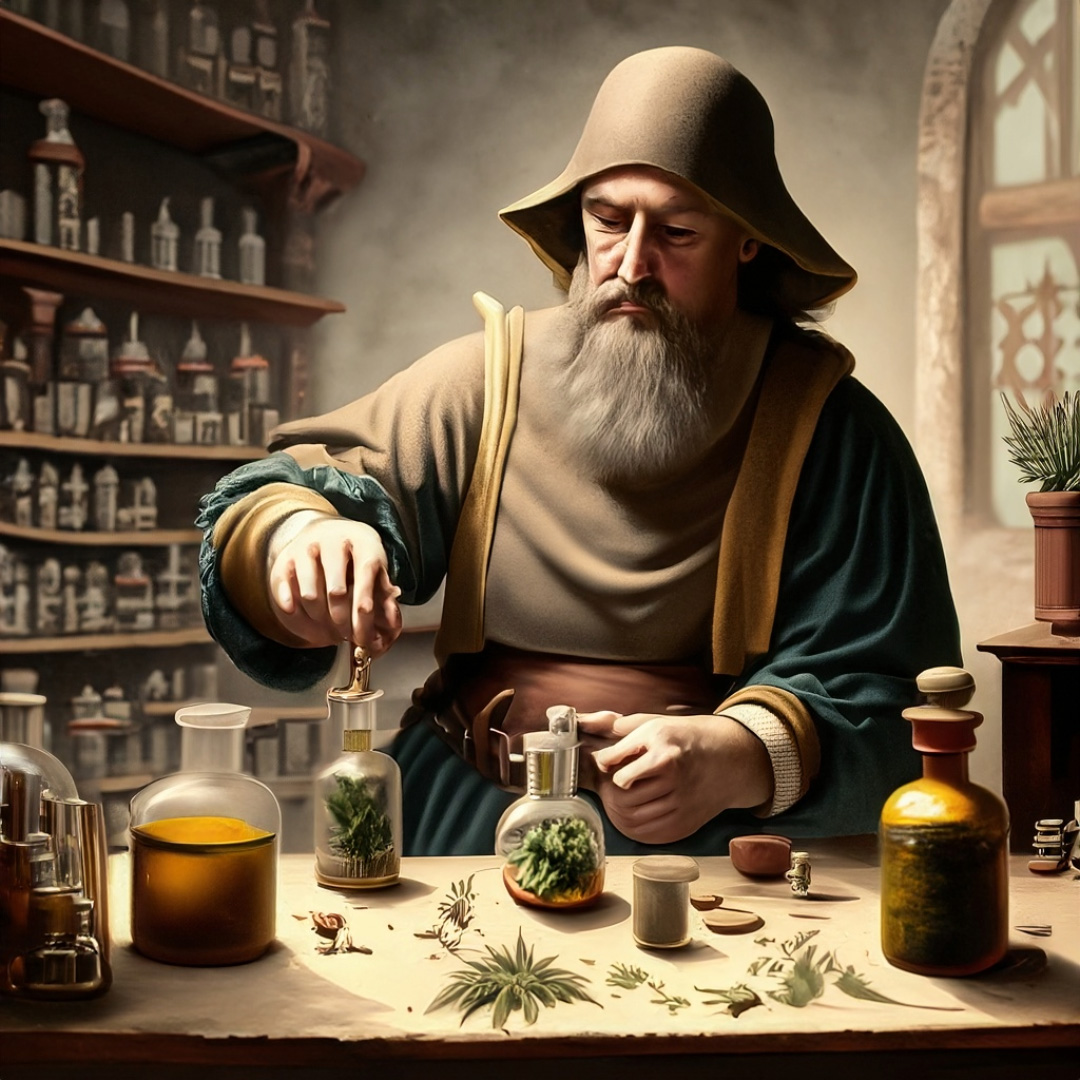From their beginnings, monasteries served as places of prayer, meditation, and industrious activity, and the apothecary monks were experts in the cultivation, preservation, and drying of herbs.
In addition to gathering individuals dedicated to asceticism and divine contemplation, these monastic havens often provided temporary refuge to pilgrims and passing travelers. As a result, they housed centers for medical assistance, hospices, and shelters, initially reserved for monks or nuns but gradually opening their doors to outsiders, including the poor, needy, and sick.
Over time, monastic hospitality and hospital activities became almost synonymous, so the monasteries needed specialists capable of preparing natural remedies for the treatment of injuries and ailments: apothecaries.
A significant portion of the apothecaries’ training came from their fellow monks, but they also dedicated themselves, more or less independently, to the study of classical texts on medicinal plants and medicine. Often, the monks themselves translated these texts from Greek or Arabic.
One such apothecary was a Capuchin monk, Fra Marco da Cremona, who worked at the convent of Santa Maria dell’Immacolata Concezione in Milan. Fra Marco compiled his pharmaceutical recipe book between 1641 and 1657, drawing from his own experience, from the main pharmacological texts of his time, and from folk medicine.
Fra Marco used around 350 herbs to prepare both ready-made “stock” medicines, crafted in his laboratory, and specific preparations made to precise medical orders. These remedies were largely derived from existing pharmacopeias, alongside ancient remedies such as theriac (a traditional poison antidote dating from ancient Greece) and the so-called “Apostles’ Ointment,” new products imported from the New World like guaiac wood (“holy wood”), and minerals like antimony, known since ancient times as an emetic-purgative, and mercury for the treatment of syphilis.
Fra Marco employed all the tools at his disposal: jars, pitchers, scales, spatulas, mortars, and presses. He knew the methods of preparing products and was adept at grinding, washing, infusing, cooking, distilling, and composing each herb, considering the right ripening period, harvesting time, proper drying, and preservation methods. Each medicinal herb had to be collected at a specific time of the year to maximize its efficacy. Preservation and drying required a profound knowledge of the plant’s natural cycle.
In Fra Marco’s recipe book, minerals and drugs selected for their active principles appeared alongside remedies that largely used manipulated plant substances. Elements such as the use of mummy powder and human skulls were also listed. The former was believed to be effective against a wide range of ailments, including abscesses, skin eruptions, fractures, bruises, paralysis, migraines, and epilepsy. The human skull, on the other hand, was used for the treatment of the plague.
Fra Marco’s compendium of recipes is a fascinating and unique document for understanding the most common ailments of the time, the methods used to treat them, and discovery of their causes with the aid of the first autopsies performed in semi-clandestine conditions in the secret rooms of the convents.

